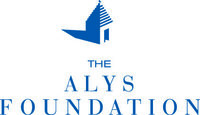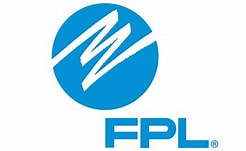Picture This!
- School:
- South Walton High School
- Subject:
- Teaching Quality
- Teacher:
- Vivian Komando
- Students Impacted:
- 65
- Grade:
- 10
- Date:
- October 2, 2018
Investor
Thank you to the following investor for funding this grant.
The Alys Foundation - $998.95
Goal
My goal is for my students, Grades 9th - 12th, to experience the magic they can create by working in a wet darkroom. I wish to teach them the fine craft and art of developing photographic prints through darkroom techniques and processes for developing film and printing photographs from their developed film. The art of using darkroom processes is disappearing in our digital age. Our current society relies on digital capture to create images that at times may never exist as a photograph / hard copy, but may only exist as digital files on a server or cloud. The student’s photographic work will require knowledge and skills to successfully develop film and to print images from their developed film. The permanence of the black and white photograph has endured in time.
This is the knowledge I wish to impart to my students in Photography and 2D Art classes, as well as for my Drawing students, as they consider the possibilities of coupling darkroom processes with drawing issues such as mark making and alternate drawing methods. Returning to the darkroom rather than always depending on digital resources, brings the student to the historical arena where photography first began and its importance and hierarchy leading to digital imaging.
Darkroom work will enhance and add more complex layers of skills, techniques, and mastery to the student’s Art portfolios for college, career, and AP portfolios. I wish to impart to my students the knowledge and experiences the Darkroom holds for them as photographers and artists that are career related.
Art can play a key role in developing and nurturing creativity and imagination, a trait sought after by many employers in today's business world. Art also enhances self-image and confidence in one’s abilities. I believe the exciting process of creating and being successful in the darkroom will enable my students. Incorporating the darkroom experience into our 2D, Digital / Photo, and Drawing Art programs. The darkroom will enable our students to persist as they create and allows me to create a richer learning experience in the art classroom.
What will be done with my students
Define the desired outcomes of the grant:
We have the beginnings of a darkroom and the students desire a working darkroom. This grant will enable a working darkroom for those students taking Art classes and students in Art Club.
Grant Goals and Benchmarks/GLEs 9th – 12th:
Meeting the following Florida Visual Arts Standards:
Big Idea: Skills, Techniques, and Processes
VA.912.S.1
Enduring Understanding 1:
The arts are inherently experiential and actively engage learners in the processes of creating, interpreting, and responding to art.
VA.912.S.1.6
Describe processes and techniques used to record visual imagery.
VA.912.S.1
The arts are inherently experiential and actively engage learners in the processes of creating, interpreting, and responding to art.
Big Idea VA.912.H: Historical and Global Connections
Enduring Understanding 2
VA.912.H.2 :
The arts reflect and document cultural trends and historical events, and help explain how new directions in the arts have emerged.
Big Idea VA.912.F: Innovation, Technology, and the Future
Enduring Understanding 2
VA.912.F.2 : Careers in and related to the arts significantly and positively impact local and global economies.
The students (65+) in 2D AP Photo Digital, Creative Photo I, Creative Photo 3, AP Photo Innovations, and Art Club will learn how to use darkroom equipment and techniques to create photographic images in B&W by processing their own film and printing their negatives using photographic enlargers. I believe these experiences will enhance our digital photography students’ learning, which can also be applied to their digital work. The darkroom is a foundational element for the Photography / Digital, Drawing, and 2D students.
Santa Monica College firmly stands behind all methods of photography, traditional wet darkroom with film and digitally produced studio or computer touched imagery. College Students who have pursued darkroom photography have made statements as to how the darkroom enhances learning in the creation of personal imagery as well as how the darkroom has empowered them in the careers they have followed. The following are quotes from SMC graduates on Traditional Photography.
Eva Kolesko -
“I still consider shooting the traditional film the best way to learn lighting, exposure and printing. Too many times I hear from new photographers: Oh, I can fix that in Photoshop! How about shooting it the correct way in the first place instead of spending hours in front of the computer retouching photos?”
Lucinda Wedge -
“All the basics still need to be taught in order to be a successful photographer. Without the basic B&W, basic color classes, how to light..., you will never make it to the caliber expected by today's working world. The foundation must be there to build on.”
Maureen Ford -
"In my opinion, I feel black and white film/darkroom knowledge is still as important as digital, because it is the essential foundation that's your launching pad into knowing what is going on with an image and how to create it and manipulate it. Those same darkroom concepts are translated in Photoshop tools and techniques as well. All the tools acquired in a photography program are interrelated and essential to today's market. Having a strong foundation makes it easy to translate all formats into knowing how to make that final image and where film can marry digital output, but as the film photographer you are well versed in both techniques. You can't be left behind the curve!"
https://www.freestylephoto.biz/importance-of-darkroom/ford-lowcock
College / Career Readiness:
Most college photo programs now offer instruction in digital imaging along with traditional approaches to darkroom photography. Schools that have abandoned the traditional study of analog photography have done so due to economical reasons. The advantages of digital work are that it is instantaneous and that mistakes are simply deleted at no cost. Analogue work is a truer learning experience for the student interested in photography, where learning informs structure, method, and outcomes. Having only a roll of film, the student is then encouraged to be more thoughtful in planning and creating within 24 or 36 frames of opportunities. Printing also becomes about informed deliberate choices in processing and developing work.
Visiting Artists: Photographers will be involved as guest speakers to come and speak about their photographic businesses with the students.
Craig Stevens, a professor of photography at Georgia’s Savannah College of Art and Design, has observed the same phenomenon. “Digital technology is so good that it creates an automatic acceptance of the end product, as is,” he explains. “Using black-and-white film defies that notion. Students must consider exposure, development, and how technical choices combine with aesthetic decisions to affect the final image," he says. It forces students who have grown up in the fast-and-furious world of digital to slow down.
Maxine Payne, who heads the photography department at Hendrix College believes that the benefit of learning darkroom photography is relevant to other aspects of academic and personal lives as well. “They learn that an investment of time in anything they do yields greater understanding and appreciation, and ultimately skill.”
https://www.americanphotomag.com/darkroom-photography-relevant#page-6
Film informs digital photography. Darkroom printing taught Thomas Knoll, the creator of Photoshop, to understand “the struggle of trying to adjust an image.” The hands-on, creative control of processing and printing teaches us about light and dark, tones and hues, and how the surface of a print affects its tonal range. It exposes us to the tangible, tactile quality of the printed image in a way that digital rarely does. Each negative is precious: you have carefully processed it. Film informs digital: digital is derived from it.
Project Activities & Timeline – All Students in Photo Digital Classes will work in the darkroom, as well as opening the opportunity to other Art students and Art Club members (65+)
1. Students will use SLR cameras and film (which I have for those that do not have access to film cameras) to photograph their works.
2. They will learn how to develop and process their film.
3. Students will then use their film negatives to process and develop photographic prints in B&W in the darkroom.
4. Students will keep notations about their darkroom practices once techniques are taught.
5. There will be class demonstrations as well as darkroom handouts, books, and other learning resources will be shared by both the teacher and the students.
6. Students will learn about Photographers and their selected subject matter.
7. Students will print 2-4 quality prints
8. Students will learn alternate darkroom techniques (Double Exposures, Negative Manipulations, Solarization / Sabattier Method, etc.) so they can experiment and further develop their works.
9. Student work will be displayed and included in Art shows / Exhibits / Competitions / Portfolios
10. The timeline is initially 1 semester due to darkroom rotation for all students to have access, but will continue as students wish to use the darkroom.
This curriculum is to be permanently integrated into our Art curriculum. Art students who are passionate about creating and how they create are very excited about having a darkroom. They are eager to create and engage in this analogue manner. Future students will be able to continue the use of the darkroom as this grant supports darkroom equipment and tools.
The teacher is responsible for managing the darkroom activities in the Art room along with class aides and students.
Evaluation will be based on 65 + student outcomes:
1. Film Processed and Developed correctly (1 roll per student minimum)
2. 2-4 B&W Prints Developed correctly (Based on Ansel Adams or Selective Contrast / Grayscale / Tone / Compositional Cropping using Rule of thirds / Golden Ratio)
3. 1 Experimental Print – with class presentation of process and self-evaluation on the success of the experiment.
Benefits to my students
Benefits for the students from darkroom learning include:
1. Creativity can be enhanced as film offers creativity without distraction. When students shoot film the clear view through the viewfinder enables the student’s concentration on the subject. The darkroom is free of distractions. Shooting and/or processing film encourages them to be patient, focused and reflective allowing them to enhance craftsmanship.
2. “The negative is the equivalent of the composer’s score, and the print the performance,” said Ansel Adams. Yet many modern-day photographers never print, and only see their images on screen. The darkroom gives the students the opportunity to experiment and explore with photographic paper, varied tones, surfaces and silver content – higher level thinking is required.
3. Analogue widens the appeal of photography. Many higher-education institutions teaching photography still have darkrooms, and film is proving increasingly popular with students.
4. Digital Photography for most is based on choosing the correct icon to take a photograph or setting the camera on auto. Darkroom photography will give the students a richer and informed learning experience with their SLR cameras, film, and darkroom processing. Students MUST know the skills and parameters for processing and developing. This learning of new skills, deepen understanding and produce results visually quite different to digital. This is the discovery of something as old as the art form but as new as the age
5. Darkroom work provides rigor as it requires dedication and a strong work ethic to be successful. The draw and magic of the darkroom makes a student persist as s/he learns.
6. The darkroom enhances differentiated learning with hands on opportunities, especially for those students that are sometimes flustered by technology.
7. It is a Kinesthetic experience.
8. The darkroom builds artistic pride as students learn skills other do not possess.
Budget Narrative
We have the beginnings of a darkroom with a supply closet being converted into a darkroom. I have donated an enlarger for printing and have also received a second enlarger as a community donation. I also have some minor supplies from my own time in the darkroom, but these items are not sufficient for a working darkroom. The items I am requesting will make the darkroom workable. We do not have the funds to provide these supplies and we are relying on the Your Grant to make the darkroom a reality. The students know we are in the process of building a working darkroom and they are incredibly excited to begin work. Sprint Photo Supplies has donated initial chemicals for the darkroom.
Items
| # | Item | Cost |
|---|---|---|
| 1 | $132.00 | |
| 2 | $9.99 | |
| 3 | $167.00 | |
| 4 | $131.95 | |
| 5 | $17.96 | |
| 6 | GraLab Model 171 Universal Darkroom Timer | $134.95 |
| 7 | $14.85 | |
| 8 | $20.85 | |
| 9 | $24.95 | |
| 10 | $114.00 | |
| 11 | $129.00 | |
| 12 | $71.60 | |
| 13 | $29.85 | |
| Total: | $998.95 |






Share
Please share this page to help in fulfilling this grant.
Email to a Friend